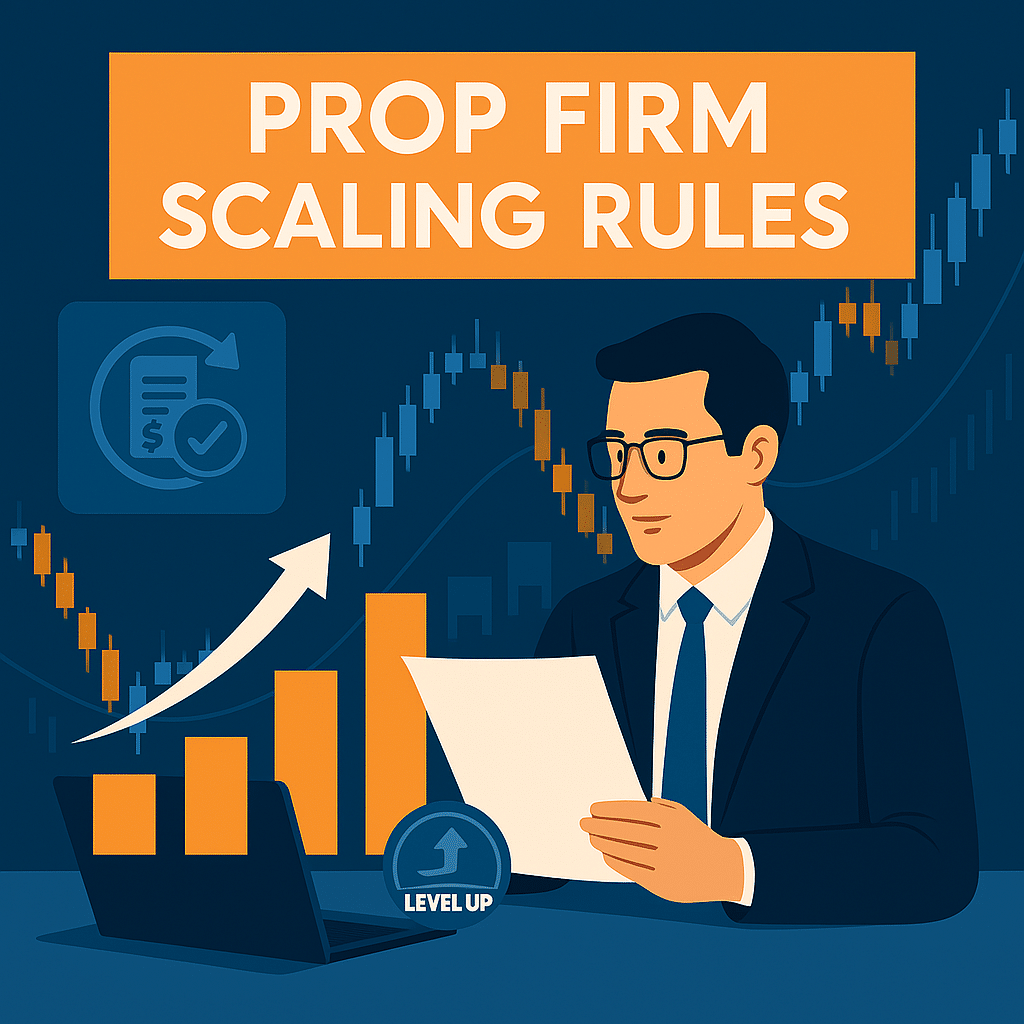Prop Firm Scaling Rules: Understanding Scaling Rules in Prop Challenges
Understanding prop firm scaling rules is essential if you’re aiming to build a long-term career with a proprietary trading firm. While most traders focus on passing the initial challenge, the real growth happens afterward—through scaling. Whether you’re trading with a $25,000 or $200,000 account, your ability to access more capital depends on how well you understand and follow the firm’s scaling structure.
In this article, we break down the most important elements of scaling rules in prop trading, how they vary, and how trusted firms like Larsa Capital empower traders through clear and achievable scaling models.
What Are Prop Firm Scaling Rules?
Scaling rules refer to the structured policies a prop trading firm sets that allow traders to gradually increase their funded account size. These policies are based on consistent performance, risk management, and compliance with trading rules.
Most prop firms offer scaling programs to motivate traders and reward consistent profits. But these rules are never identical. Some are milestone-based; others tie increases to time, performance, or risk metrics.
Why Scaling Rules Matter in Proprietary Trading
Scaling rules act as a reward system. If you perform well and follow the rules, the firm entrusts you with more capital. This means greater earning potential with the same percentage profit targets.
Without a clear understanding of the prop firm scaling rules, traders may hit performance targets but miss out on account upgrades simply because they overlook minor conditions.
With the right approach, however, scaling can help you:
- Grow your account steadily without added risk
- Maximize your earning potential
- Demonstrate long-term trading discipline
Core Components of Prop Firm Scaling Rules
1. Performance Benchmarks
Most firms set specific profit targets to trigger scaling. Common targets include:
- 10% monthly or quarterly returns
- Maintaining a win rate above a certain threshold
- Avoiding high drawdowns
Performance is typically measured over a period of 30 to 90 days.
2. Risk Management Compliance
Scaling is not just about profit. You must also:
- Respect maximum drawdown limits
- Avoid excessive daily losses
- Trade with consistent lot sizes and discipline
These measures ensure you’re scaling responsibly.
3. Minimum Trading Days
Even if you hit profit targets in a few trades, most scaling models require a minimum number of trading days. This proves your results are not based on luck or one-off trades.
4. Account Review and Approval
Before scaling is granted, many firms review your trades manually or through automated systems. At Larsa Capital, this process is straightforward, and eligible traders are notified promptly once they qualify for scaling.
Prop Firm Scaling Rules in Larsa Capital Challenges
Larsa Capital offers one of the most structured and transparent scaling programs in the industry. Here’s what sets it apart:
- Regular Scaling Reviews: Traders are reviewed periodically based on consistency and risk management.
- Profit-Driven Milestones: Scaling is based on meeting clear and realistic profit goals.
- Risk-Adaptive Scaling: As your account scales, so does the risk control mechanism to ensure sustainable growth.
- Clear Communication: Traders are informed at each stage of eligibility and are never left guessing.
This approach enables traders to focus more on their strategy and less on hidden clauses.
Common Misunderstandings About Scaling Rules
1. Scaling Is Not Guaranteed
Some traders assume scaling happens automatically. In most cases, scaling is conditional and must be earned by fulfilling all outlined criteria.
2. Bigger Accounts Require Tighter Discipline
As your capital grows, so does the responsibility. Many firms tighten rules for larger accounts. Traders must adjust accordingly.
3. High Profits Don’t Always Lead to Scaling
Profit is only one part of the equation. Failing to meet minimum trade days or violating minor rules can delay scaling—even if your returns are impressive.
How to Increase Your Chances of Being Scaled Up
Stick to the Plan
Avoid impulsive trades. Consistency matters more than big wins when it comes to scaling.
Monitor Your Metrics
Track your drawdowns, risk-to-reward ratios, and trade frequency. Staying within limits is key to qualifying for scaling.
Document Your Progress
Keeping a journal or dashboard with your results helps you prove your consistency and can be useful during manual reviews.
Communicate with Support
If you believe you’ve met scaling requirements, don’t hesitate to reach out to the firm. Transparent companies like Larsa Capital are happy to verify your eligibility.
Subheading Featuring the Keyphrase: Understanding Prop Firm Scaling Rules Step by Step
Now that you know what the rules are, let’s walk through them in practical terms:
- Trade Consistently: Don’t chase big wins. Aim for sustainable profits.
- Respect Risk Limits: Always stay within daily and overall drawdown limits.
- Hit Profit Milestones: Follow the firm’s profit targets diligently.
- Meet the Time Requirements: Don’t rush; complete the minimum trading days.
- Follow Up: Confirm scaling eligibility with your firm if not automatically upgraded.
The Bigger Picture: Why Scaling Is the Future of Prop Trading
Prop trading is evolving. Gone are the days when traders stayed at fixed capital levels. Modern prop firms invest in long-term trader development, and scaling plays a central role in that model.
With a clear understanding of prop firm scaling rules, you position yourself for progressive account growth, consistent profits, and a lasting relationship with your firm.
Firms like Larsa Capital are paving the way for trader-centric scaling models that put growth and transparency at the forefront.

